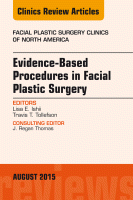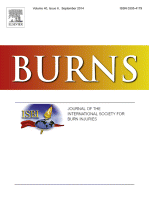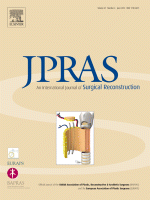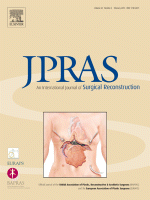Alderman, A; Chung, K. C.
Clinics in Plastic Surgery, 2013-04-01, Volúmen 40, Número 2, Pages 297-304
 Evidence-based medicine (EBM) is being embraced by plastic surgery. Patient values are combined with scientific data to complement a plastic surgeon’s clinical experience. However, because scientific data are difficult to distill from the aesthetic literature, there are significant challenges to integrating EBM principles into the art of aesthetic surgery. The primary dilemmas are to define the desired goals of aesthetic surgery and determine how outcomes can be measured; these challenges still face this subspecialty of plastic surgery. The article presents an objective view of evidence – based medicine application to aesthetic surgery. The challenges are discussed and the points that create them are analyzed. Psychological and external factors in decision-making for aesthetic surgery are presented. The handling of surgical complications is presented as an example affecting reporting of outcomes.
Evidence-based medicine (EBM) is being embraced by plastic surgery. Patient values are combined with scientific data to complement a plastic surgeon’s clinical experience. However, because scientific data are difficult to distill from the aesthetic literature, there are significant challenges to integrating EBM principles into the art of aesthetic surgery. The primary dilemmas are to define the desired goals of aesthetic surgery and determine how outcomes can be measured; these challenges still face this subspecialty of plastic surgery. The article presents an objective view of evidence – based medicine application to aesthetic surgery. The challenges are discussed and the points that create them are analyzed. Psychological and external factors in decision-making for aesthetic surgery are presented. The handling of surgical complications is presented as an example affecting reporting of outcomes.
 Systematic reviews and meta-analyses hold a unique position in the pyramid of evidence. They can provide transparent and rigorous summaries to answer many clinical questions in facial plastic surgery. They can also identify areas of research deficiency, create new knowledge, and support guidelines or policies. A well-conducted systematic review follows a structured process to minimize bias and ensure reproducibility. When appropriate, a meta-analysis is incorporated to provide a statistical synthesis that combines the results of individual studies. This powerful quantitative method is becoming more prevalent in facial plastic surgery. This article provides a practical framework to understand and conduct this valuable type of research.
Systematic reviews and meta-analyses hold a unique position in the pyramid of evidence. They can provide transparent and rigorous summaries to answer many clinical questions in facial plastic surgery. They can also identify areas of research deficiency, create new knowledge, and support guidelines or policies. A well-conducted systematic review follows a structured process to minimize bias and ensure reproducibility. When appropriate, a meta-analysis is incorporated to provide a statistical synthesis that combines the results of individual studies. This powerful quantitative method is becoming more prevalent in facial plastic surgery. This article provides a practical framework to understand and conduct this valuable type of research. Free tissue transfer is a rarely indicated procedure in burns. However, in well selected cases it may play a pivotal role in optimizing outcomes in both primary and secondary burn reconstruction. We undertook a systematic review, based on the PRISMA statement for systematic reviews, of all published literature relating to the use of free flaps in acute burns and in secondary reconstructive procedures.
Free tissue transfer is a rarely indicated procedure in burns. However, in well selected cases it may play a pivotal role in optimizing outcomes in both primary and secondary burn reconstruction. We undertook a systematic review, based on the PRISMA statement for systematic reviews, of all published literature relating to the use of free flaps in acute burns and in secondary reconstructive procedures. Anastomotic microvascular device has gained popularity in reconstructive microsurgery over the last two decades. A systematic literature search has been carried out in the use of the venous coupler device in microsurgery to assess its impact on patency rate in microsurgery.
Anastomotic microvascular device has gained popularity in reconstructive microsurgery over the last two decades. A systematic literature search has been carried out in the use of the venous coupler device in microsurgery to assess its impact on patency rate in microsurgery. The prestigious magazine Journal of Plastic, Reconstructive & Aesthetic Surgery publish this article about an actual issue at the Services of Plastic Surgery. There is growing interest in the use of autologous fat grafting (AFG) for breast reconstruction. Concerns have been raised regarding its effectiveness and safety. The primary objective was to determine the oncological, clinical, aesthetic and functional, patient reported, process and radiological outcomes of AFG.
The prestigious magazine Journal of Plastic, Reconstructive & Aesthetic Surgery publish this article about an actual issue at the Services of Plastic Surgery. There is growing interest in the use of autologous fat grafting (AFG) for breast reconstruction. Concerns have been raised regarding its effectiveness and safety. The primary objective was to determine the oncological, clinical, aesthetic and functional, patient reported, process and radiological outcomes of AFG. El objetivo de la presente revisión sistemática es determinar si los lipoinjertos enriquecidos con células madre derivadas del tejido adiposo son superiores a los injertos de tejido graso convencionales en el tratamiento de la lipoatrofia facial.
El objetivo de la presente revisión sistemática es determinar si los lipoinjertos enriquecidos con células madre derivadas del tejido adiposo son superiores a los injertos de tejido graso convencionales en el tratamiento de la lipoatrofia facial.





 Sitio web publicado el
Sitio web publicado el
Los lectores comentan